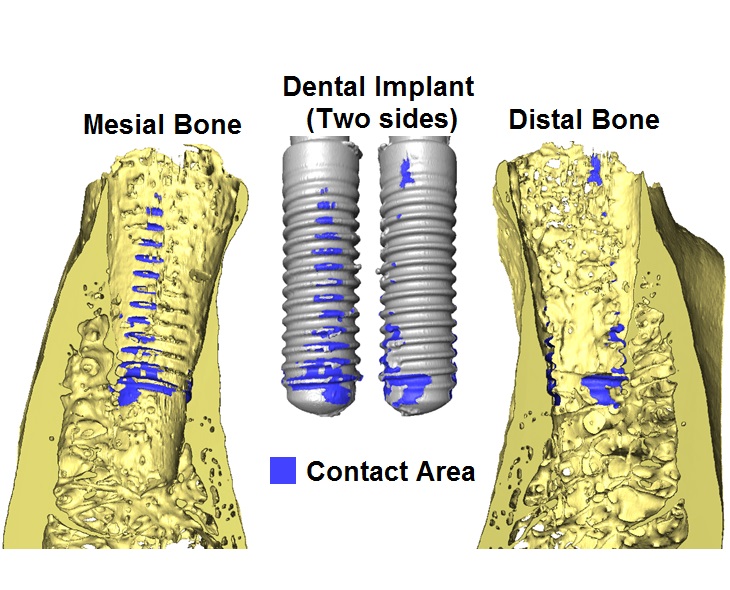Bone-Implant Mechanics

While the underlying mechanisms are not fully understood, mechanical factors are widely reported to play a key role in dental and orthopedic implant success. We are using mechanical testing coupled with micro X-Ray computed tomography (micro-CT) to measure the 3D full-field deformation and strain inside trabecular bone. We also use atomic force microscope (AFM) to map the mechanical properties for the microstructures and ultrastructure in bone. We are also working on the image-based micro- finite element (micro-FE) models and the numerical simulations of bone remodeling under mechanical stimulus. These results can potentially provide insights to commonly observed clinical complications and improvements in surgical planning and techniques.

